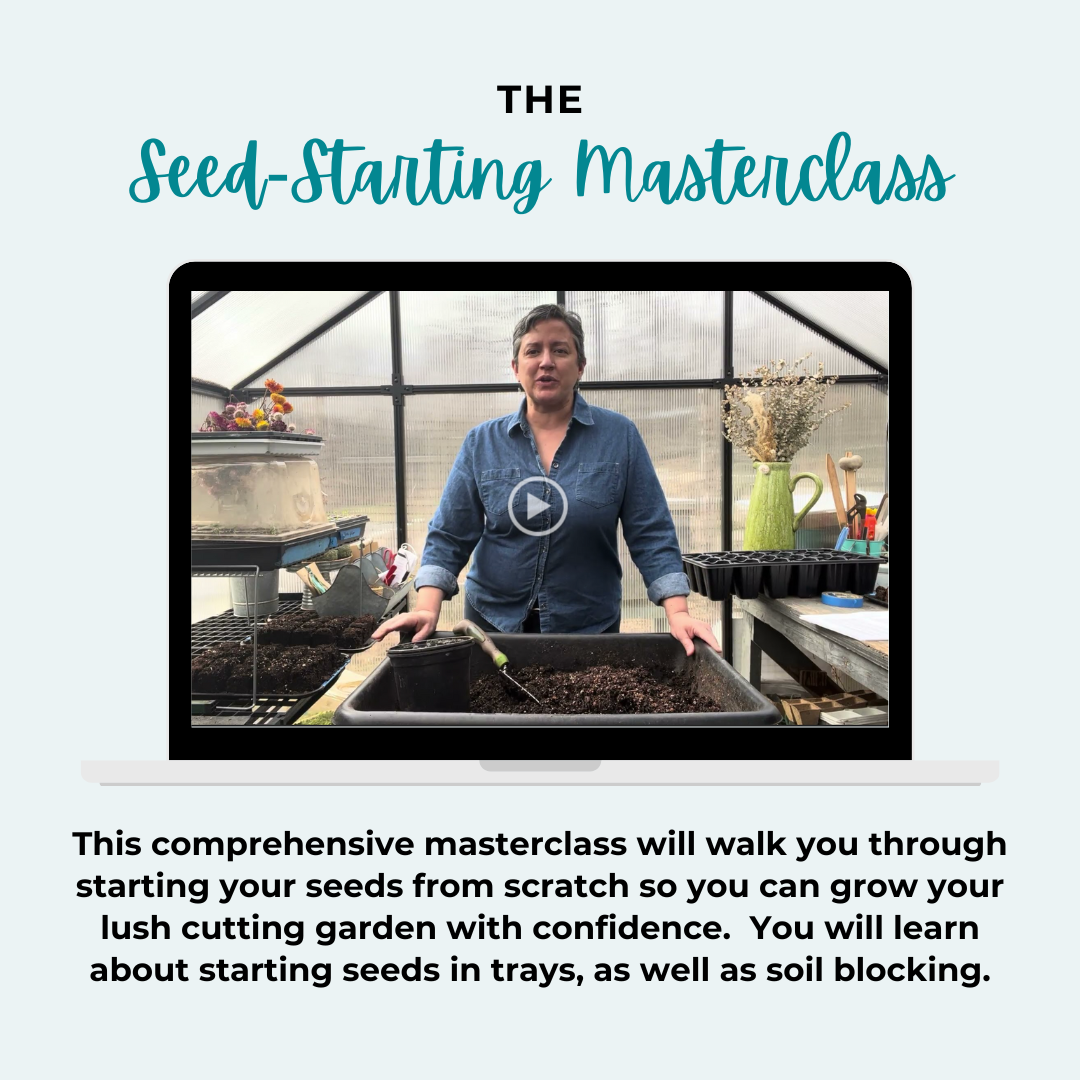Mid-Season Garden Check-In: How to Assess & Make Changes
The gardening season may be flying by, but that doesn’t mean it’s time to think about fall just yet! There are still plenty of things to focus on in your garden during the mid-season.
The weather this year has been making the growing season challenging — heat waves and hard rains have been stressing out plants, encouraging weeds, and increasing pest pressure. Flower farming and gardening can be hard sometimes, but don’t worry. I’m here to support you through this season and the gardening seasons to come.
Today we’re going to go over which tasks to work on in the middle of summer, and how to tackle them.
Assess & Address
Take some time to reflect on your garden and its progress so far this year. Ask yourself these questions:
What’s been going well?
What do I want to do differently next year?
Do I have any spacing issues I need to address?
How effective has my watering schedule been?
What do I want to grow this fall?
Are there any pests or diseases I need to address?
Have I tested my soil recently, or does it need to be done again soon?
Do I need to fertilize my soil at this time?
Once you’ve taken some garden notes, make a plan for any changes you need to make. Our Soil Health Starter Guide will help you to address any issues in your soil — the foundation of your garden!
Prune & Deadhead
Walk through your garden to deadhead any spent blooms. This will encourage continuous blooming throughout the rest of the season! You’ll also want to prune any perennials for shape and vigor at this time. This is a good time to prune spring flowering shrubs such as lilacs, spirea, and viburnum.
Remember to continue to deadhead, prune, and harvest, especially cut-and-come-again flowers like zinnias, cosmos, and dahlias, to keep them blooming.
Curious how we deadhead our dahlias? Watch our video tutorial.
Pinch & Harvest
Now that spring plants are done blooming, we are starting to harvest summer blooms.
This is such a fun task, because you can enjoy your hard work! Harvest flowers early in the morning, when they’re at their best. Just be sure your pruners are clean and disinfected.
You’ll also want to take this time to pinch the top growing tip of any annual plants that benefit from pinching to produce more side branches. You can just pinch the tips off with your fingers or you can use snips or hand pruners. Just be sure your pruners are clean and disinfected.
Once you’ve harvested your blooms, it’s time to arrange them or dry them. If you want to learn how to preserve your floral bounty for projects and crafts, check out this blog post.
Weed & Fertilize
Weed your beds, especially around the base of the plants. Plants don’t do well when they are crowded by weeds because they are competing for nutrients. These weeds also offer a place for pests to hide out in.
Take time to fertilize the heavy feeders such as dahlias and roses, but with the recent heavy rains washing away many nutrients, you may want to fertilize each crop in your garden.
Here at Sweet Earth, I first start with feeding diluted molasses to the microbes in my soil to help them do their job of making nutrients available to the plants. Then, I also provide the plants with further nutrients by applying a foliar spray of fish and seaweed fertilizer (affiliate link) mixed with diluted molasses.
Remember to observe and treat for pest pressure, along with keeping an eye out for any diseases at this time. If you want to learn more about chemical-free methods to treat pests and diseases, we have an upcoming blog post all about it. Get on our mailing list to hear when it goes live.
Succession Planting
It’s not too late to plant — start or continue your succession planting!
Succession planting will allow you to maximize your yield throughout the entire gardening season, by planning what you’ll grow in the spring, summer, and fall. Quick-growing annuals are a great choice at this stage. Remember to choose varieties that can be successful in cooler temperatures, as the heat of summer will start to fade.
Sunflowers are easy to grow and are quick to go from seed to bloom. Calendula is another flower that has a short days-to-maturity and can be seeded now. Zinnias are another flower you can seed now for fall blooming.
We have a great post to help you maximize your best garden tool — your plan! You can read that here.
Start Your Late-Summer Seed Starting & Direct Seeding
You can also start seeds in trays for cool-season annuals and any perennials that will be overwintered.
Some seeds that we’re starting indoors now and plan to transplant out in the garden in September for overwintering are:
Snapdragon
Agrostemma
Sweet pea flowers
Check out this blog post for more cool season flowers.
Need help with seed starting? We have a masterclass with everything you need to know.
We are also planning which cool-season flowers we are going to direct seed in the fall so that they can put on some growth before overwintering. For us, these plants include:
Nigella
Bupleurum
Bachelor Button
Ammi
Larkspur
These seeds are very low maintenance as well — you’re able to prep your beds, sprinkle in seeds, and quickly see germination with low effort.
Now that you have your plan for mid-season gardening, it’s time to get to work. Enjoy your time in the garden this season — it goes by so fast!
If you’re ready to start planning for fall, winter, and even next spring, check out our Eco-Friendly Flower Garden Planner & Journal.



